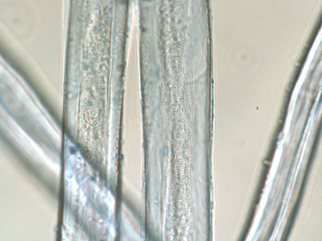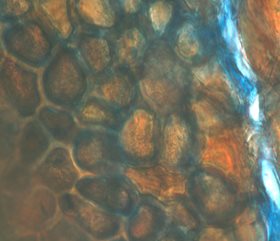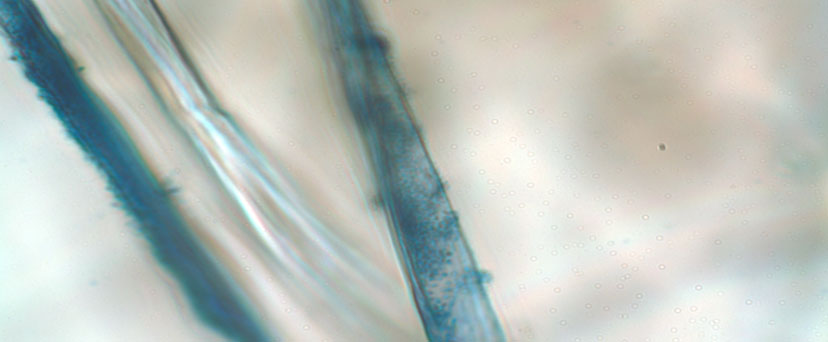Second in the series Unlocking Plant Root Potential: A Conversation with Dr. James White
In part-two of our series with Dr. James White, we look at the role of seeds and their central association with root hairs. You may remember from our first blog in the series, the new and integral role of root hairs in “farming microbes” from the research Dr White’s team continues to execute.
As the foundation of a species, seeds are the carriers of genetic material, nutrients, and water, but according to Dr. White’s research, seeds are also carrying microbes that both stimulate and benefit the new plant as it grows.
“A plant will take in bacteria from the soil that is most beneficial to it,” says White, “and will deposit those beneficial bacteria on its seeds. This is done so that when a seed falls somewhere (or is harvested for planting the next season) and begins to germinate; it will have a little community of beneficial microbes already on it.”

In cotton, microbes are carried in fibers on seeds. Photo courtesy of Dr. James White
White says that the problem arises when seeds are cleaned, “If you clean those seeds or do anything to remove those microbes and substrates, you won’t have a rich community of microbes on those seeds that are produced,” he says. “Seeds have lost a lot of the microbes they naturally carry due to how seed is treated.
Cotton is a good example: All of the fibers are removed from the seeds by using acid to get these seeds nice and clean, but it turns out that the acid kills microbes, as well.”
The seed coat surface is the vehicle that carries those beneficial microbes for the cotton plant.
And White believes that this is much of the reason cotton has gained the reputation of being a “dirty plant.”

Photo shows blue-stained bacteria carried on a cotton seed. Photo courtesy of Dr. James White
“We think that because cotton has lost those beneficial microbes, that were carried on the seed coat, compounded by the fact that we have seriously degraded soils (which means degraded microbial communities) in the major cotton growing areas, that farmers are put in a situation where they have to use a lot of synthetic nitrogen, fungicides, and herbicides because those nutrients and natural defenses aren’t cycling properly,” White says.
Discovering the role of microbes on seeds
When White and his team researched the phenomena of microbial deposits on seeds, what they discovered was that microbes are quite resilient and the cleaning process took nearly an hour of soaking in an agitated sodium hypochlorite solution to devoid the seeds of all microbes.
The microbe-free seeds were then germinated.
“When we germinated the seedlings with no microbes present, what we found was that no root hairs developed, but once microbes were reintroduced, root hairs began to develop immediately,” says White.
The multi-faceted experimentation yielded more insight into the role of microbes in seedling development.
“What we found was that microbes trigger essential development functions of a seedling. Microbes trigger a gravitropic response in roots, causing them to grow down. They also trigger root hair elongation, increase root and shoot elongation and root branching,” White says.
Microbes have another effect; they also change the chemical composition of plants. In a
carrot seedling experiment, White and his team took bacteria from carrot relatives (
celery, parsley, and cumin) and put those bacteria on carrots to see what effect they had on the carrot’s chemical composition.
What they found was that the root tissue of the carrot doubled alpha carotene, leading White to believe that different microbes will have different effects on the chemical compounds produced by plants.
Preserving the microbial population
White says that seeds should be managed carefully to preserve native microbes, and with the management of seeds, soils should also be managed to build-up and foster the microbial community.
Microbes will self-preserve on dormant seed, going dormant themselves. White believes that in this process those microbes form biofilms as part of their survival process. What is known is that a seed must develop properly in order for their microbial community to develop correctly, with White noting that seeds that germinate in dry soils will lose a lot of their microbial colony while moist environments will stimulate a diverse, highly populated microbial colony.
White says that there are opportunities to correct at least some of the damage done by seed treatments and degraded seed coat microbial communities.
“Biostimulant microbes are one of the ways we can fix some of the damage we have done to treated seeds,” White says, noting that amendments are needed in the absence of microbes on seed coats.
The goal, both in untreated and treated seeds, is to create a productive rhizosphere to aid plants in nutrient cycling.
“What we see, when plants have rhizo-microbes, they are getting about 30% more nitrogen than when they don’t. And, we think that nitrogen is coming from the surface of the microbes when they (microbes) oxidize organic forms of nitrogen,” he says. “We don’t know all of the things that are happening, but we think there may be some hidden nitrogen fixation happening in the root hairs of the plant.”

White and his team found that cotton fibers, typically removed from cotton seeds, carries diverse, beneficial bacteria, as indicated in blue in this photo. Photo courtesy of Dr. James White
Related links